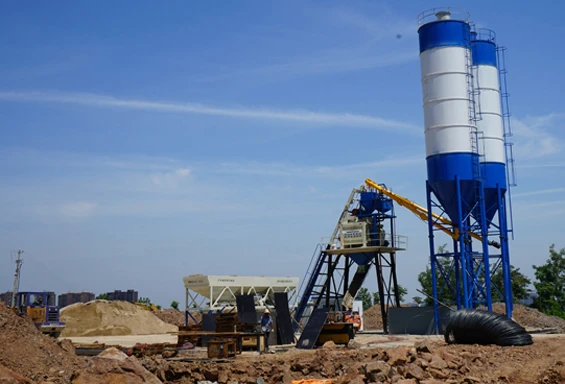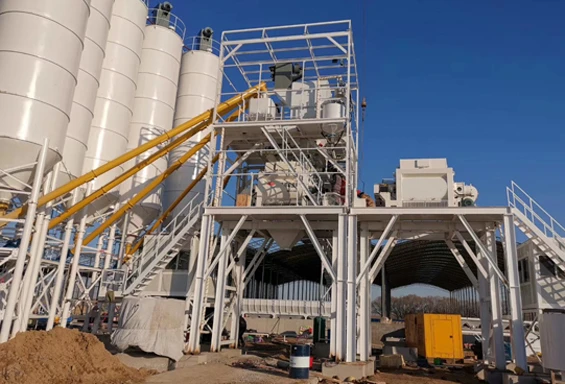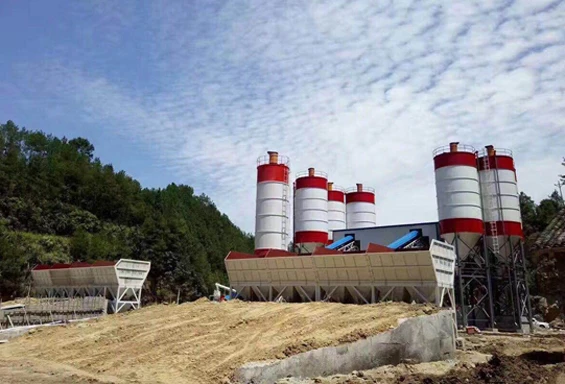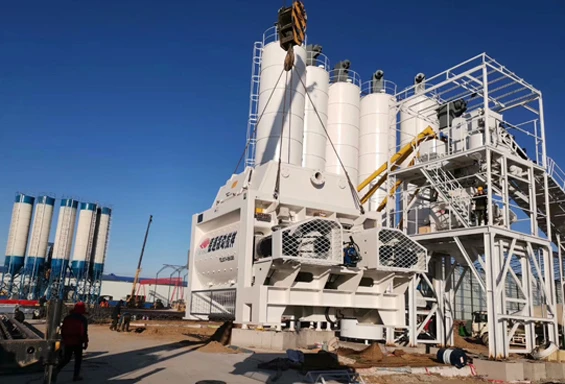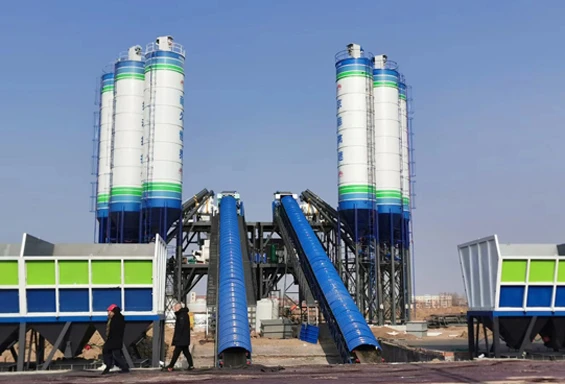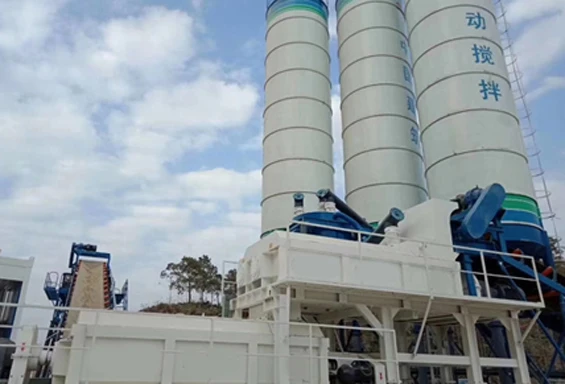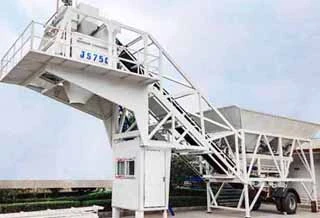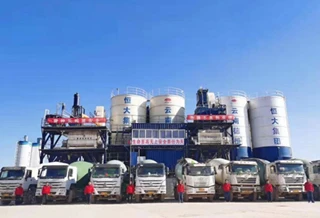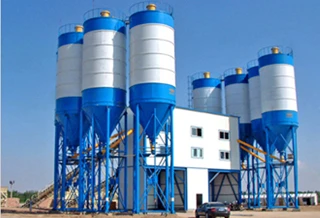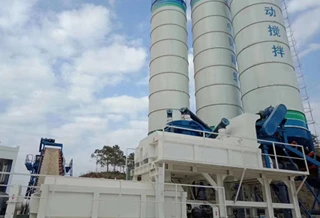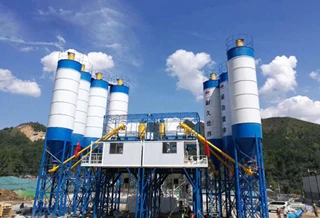Concrete batching plant, also known as concrete mixing plant, is a machine that can homogeneously blend various ingredients like aggregate (rocks, gravel, sand), fly ash, cement, silica fume, slag, water, and other admixtures to produce concrete. Once ready mix concrete is prepared, it is then transported to the construction site on a transit mixer, one kind of truck with a revolving drum. Picking the best batching plants has never been easier since they can be found in different types, sizes, advantages and limits. What you have to do in terms of this thing is to find them, and ultimately purchase the best one that can help your business take on more jobs than ever before.
Our Handpicked Batching Plants
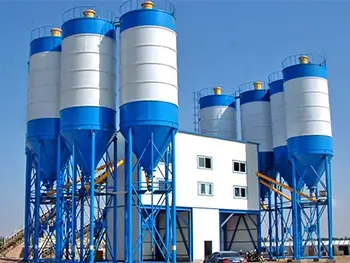
Belt Conveyor Batching Plant
Model: HZS60 ~ HZS150
Capacity: 60 ~ 150 m³/h
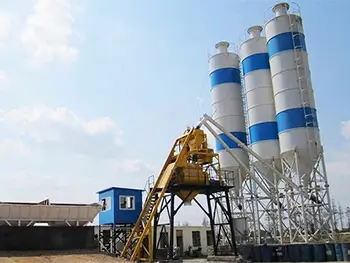
Hopper Lift Batching Plant
Model: HZS25 ~ HZS75
Capacity: 25 ~ 75 m³/h
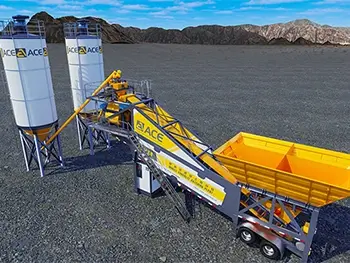
Mobile Batching Plant
Model: YHZS25 ~ YHZS120
Capacity: 25 ~ 120 m³/h
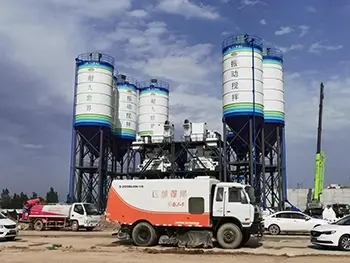
Vibration Mix Batch Plant
Model: HZS60 ~ HZS180
Capacity: 60 ~ 180 m³/h
Your investment into one of these batch plants will be an essential part of your ability to generate more revenue, simply because getting your own batch plant enables you to manufacture concrete economically. If you are a big contractor, always prepared to provide a variety of concrete for different construction companies, owning an advanced plant which can generate high-end construction materials will benefit you. The batching plant deploying an innovative vibration mix technology will make you striking for It means formidable strength and considerate service.
Understanding Concrete Batching Plant
Nowadays, without an efficient batching plant, the successful completion of a construction project is just not possible. Having a well-maintained concrete manufacturing facility allows for powerful performance and outstanding delivery. This shortens the construction time and improves the project’s quality.
Composition of a batch plant includes cement weighing unit, water measuring unit, other additive metering unit, mixer, belt conveyor, aggregate hopper, cement silo, skip hoist and so forth. The layout of these parts is subject to the type of equipment, such as belt conveyor type, hopper lift type, and others.
Many other categorization strategies exsit, all depending on the classification basis. For instance, considering distinctive water adding sequence, all batching plants fall into ready mix plants and central mix plants. Single stair type and double stair type are separated by the layout, especially referring to that of production process.
The advent of vibration mixing technique is set to bring many unknown variant types. The concrete plants adopting this up-to-date technology integrate advantages which is previously scattered in types mentioned above.
The Best Concrete Batching Plant Prices
Depending upon the size, namely production capacity, all concrete equipment in the market costs as little as a few thousand dollars, all the way up to hundreds of thousands of dollars. From our angle, the prices that is heavily connected to the plant performance is just the best ones.
| Category | Minimum Price | Maximum Price |
|---|---|---|
| Belt Conveyor Concrete Plant | $100,000 | $600,000 |
| Hopper Lift Concrete Plant | $80,000 | $300,000 |
| Mobile Concrete Plant | $100,000 | $660,000 |
| Vibration Mix Concrete Plant | $200,000 | $1,000,000 |
5 Reasons To Use A Vibration Mix Concrete Plant
As we all know, batching plant is a centralized facility that combines various ingredients to form concrete. Owning excellent quality construction equipment will definitely get quality construction work done efficiently. Vibration mix batch plant is one of them. Not only can it generate top-class concrete for some high-end projects like airport, but can cut down on fuel consumption to a large degree.
Vibration mix batching plants are recommended by us out of the reason that nothing is more important than a stable supply of enough quality concrete.
Second, calculate the scale of your contracted projects seriously, and maybe you also need to expect that of the potential projects in the future. You cannot make a decision on the production capacity of AMP until the results come out.
1. Microscopic Homogeneity Can Be Achieved
Gravity mix and batch mix, two types of traditional mixing, can achieve macroscopic homogeneity in a brief space of time. Yet microscopic homogeneity is not achieved. Two deficiencies show out, either some aggregate not wrapped by cement and additives or some cement getting agglomeration. Vibration mixing can achieve both macroscopic and microscopic homogeneity by distributing cement particles evenly and avoid agglomeration.
2. Interface Bonding Strength Can Be Enhanced
The strength of the concrete created by traditional two-shaft mixer is little weak, compared with by vibration mixer, which can get the mixture strength increased by 8%. Moreover, for vibration mixer, there are almost no residue concrete in the mixer after production.
3. Cement Utilization Rate Can Be Improved
About 10% ~ 30% cement powder is not hydrated with water, forming agglomeration. This is what happens in tradition mixers. But the phenomenon, as well as the cement wasting problem, will be eliminated when it comes to vibration mixer, which can fully hydrate the cement powder with water, directly inproving cement utilization rate.
4. Concrete Workability Can be Increased
The final product of traditional twin-shaft mixer only meet the basis requirement, while that of vibration mixer enjoys better adhesion and workability. 50% is the percentage by which the concrete structure durability is increased by vibration mixer.
5. Both Cement Consumption and Energy Consumption Can Be Saved
Laboratory data suggests that under the same concrete strength, vibration mixing reduces cement consumption by 2% ~ 25%, reduces mixing circles by nearly a half and saves 30% energy. Impressive numbers, right?
How Does A Concrete Batching Plant Work?
An intuitive 3D animation will tell you how a batching plant works.
Top Questions
1. How to manage the operation cost of a batching plant?
First, the usual protection and maintenance operations must be conducted routinely. Check in time, and repair the parts that are about to show defects in time, avoiding the equipment going paralyzed. Second, what can be recycled should be recycled as much as possible, saving material cost.
2. What is aggregate? How many types of aggregates are there?
The material that acts as a skeleton in concrete is called aggregate. The stones are called coarse aggregates, and the sand is called fine aggregates. Stones are divided into pebbles and crushed stones, and sand can be divided into river sand, sea sand, mountain sand, artificial sand and so on.
3. What are the common faults of concrete mixing plants?
Due to the aging, wear and environmental impact of parts, the following failures often occur to a batching plant: the cement scale becomes inaccurate; difficult to open and close the discharge door of the storage bins when there is no material; the discharge port does not discharge; the mixing shaft is difficult to rotate or even stops; the conveyor belt is off-track.
4. Which records should the batch plant operator keep?
Production operation records; the mix ratio adjustment record (record the changes made to the mix ratio); relocation records of identification (the model, variety, and warehouse number of the raw materials have been replaced).
Compare Specs
| Type | Belt Conveyor Concrete Plant | Hopper Lift Concrete Plant | Mobile Concrete Plant | Vibration Mix Concrete Plant | ||
|---|---|---|---|---|---|---|
| Model | HZS60 ~ HZS150 | HZS25 ~ HZS75 | YHZS25 ~ YHZS120 | HZS60 ~ HZS180 | ||
| Capacity (m³/h) | 60 ~ 150 | 25 ~ 75 | 25 ~ 120 | 60 ~ 180 | ||
| Batch Time (s) | 60 | 60 | 60 | 60 | Discharging Height (mm) | 3800 ~ 4000 | 3800 | 3800 ~ 4000 | 4200 |
| Max. Aggregate Size (mm) | 60/80 | 60/80 | 40/60, 60/80 | 80 | Total Power (kW) | 105 ~ 260 | 35.55 ~ 88.75 | 60 ~ 90 | 180 ~ 340 |
| Total Weight (Ton) | 50 ~ 100 | 17 ~ 32 | 25 ~ 54 | 60 ~ 90 | ||

